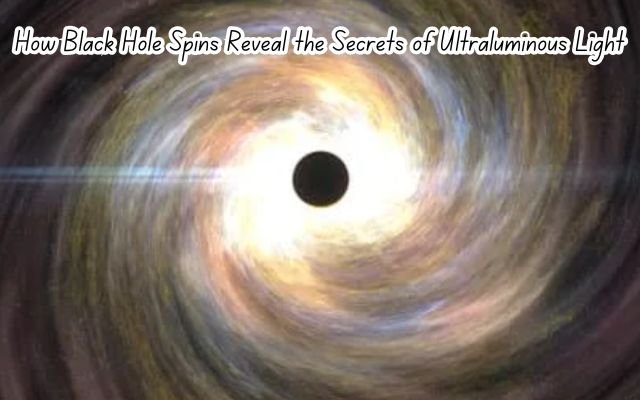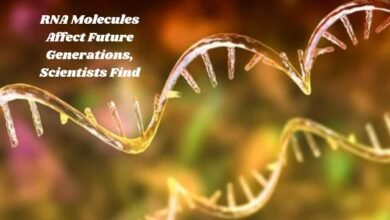How Black Hole Spins Reveal the Secrets of Ultraluminous Light
Discover how black hole spins unlock the mystery behind ultraluminous light and its impact on cosmic phenomena.

Gas that swirls around black holes forms powerful disks which are among the universe’s most effective energy converters. These disks emit light and jets of plasma, making black holes not just mysterious, but also extremely energetic. Recent simulations have uncovered that as black hole spins, these disks can wobble which changes the direction of the light and plasma they emit. One of the brightest & most mysterious kinds of space objects, ultraluminous light is better understood thanks to this study. How Black Hole Spins Reveal the Secrets of Ultraluminous Light demonstrates the intricate & ever-changing nature of these cosmic giants.
The wobbling movement of gas disks around black holes could explain why the light from these disks changes over time. This discovery sheds light on a previously unknown aspect of how black holes interact with and affect their surroundings.
Gas near a black hole (or BH) is drawn toward it by the intense pull of the black hole’s gravity, forming a spinning, donut-like structure called an accretion disk. These disks emit large amounts of light and hot plasma jets, making them one of the universe’s most effective energy conversion sources.
The surrounding accretion disk wobbles when a black hole rotates, just like a spinning top wobbles from side to side. Precession is the term for this swaying motion that has been seen in some accretion disk types with lower radiation emissions. Scientists are currently investigating whether ultraluminous accretion disks- disks that emit powerful, extremely brilliant radiation—also wobble.
Understanding more on the connection between black hole spins and the behavior of these ultraluminous disks may help us better understand the intense light and energy that some of the brightest objects in space emit. To better understand how black holes impact the galaxies surrounding them, scientists aim to solve this mystery and add more pieces to the puzzle of these intriguing cosmic events.
An interesting discovery uncovered by researchers at the University of Tsukuba has potential to alter our knowledge of black holes (BHs). Based on the ideas of general relativity, they carried out a large-scale simulation that included hydrodynamics, electromagnetism and radiation. Their study demonstrated for the first time that the wobbling (precessional motion) of the surrounding accretion disk is caused by the spinning motion of a black hole, particularly in ultraluminous accretion disks that generate extremely brilliant light and energy.
This precession isn’t just a minor detail—it has a significant effect on how the black hole behaves. The black hole’s jets and radiation occasionally change direction due to the tilting & wobbling of the accretion disk. This implies that the hitherto unidentified spin of the black hole itself is probably responsible for the variations in the luminosity (brightness) of these ultraluminous disks.
The team’s work opens up new ways to study black holes. In the future, they plan to test whether black holes are indeed spinning by comparing the results of their simulations with real-world observational data. This could give scientists a much deeper understanding of how a black hole’s spin influences its surroundings, such as the way light and energy are emitted. It could also help confirm our understanding of how spacetime works around black holes, based on theory of general relativity.
This discovery could change the way we study black holes and result in further understanding of their function in the cosmos.
FAQs
What is an accretion disk around a black hole?
A ring of gas and dust that revolves around a black hole & is pulled in by its powerful gravitational attraction is called an accretion disk. Black holes are incredibly energetic due to the massive amounts of energy emitted by this disk in the form of light and plasma jets.
How does the spin of a black hole affect its accretion disk?
Black hole spin can cause the accretion disk around it to “precess,” or wobble like a spinning top. The direction of the disk’s light & plasma jet emissions is altered by this wobbling.
What are ultraluminous accretion disks?
Disks surrounding black holes that emit strong light and energy are known as ultralluminous accretion disks. The black hole’s spin affects their behavior which can lead to variations in their brightness over time.
What new discovery did researchers at the University of Tsukuba make?
They discovered that black hole’s spin is what causes wobbling motion in ultraluminous accretion disks. Brightness of these disks varies because of periodic variations in direction of light & plasma emitted caused by this wobbling.
Why is this discovery important for our understanding of black holes?
This finding explains how black holes affect their environment & demonstrates that their spin is a key factor in energy they emit. Additionally, it adds to our knowledge of spacetime close to black holes by confirming several elements of general relativity.
Research Reference
- Title: General Relativistic Radiation Magnetohydrodynamics Simulations of Precessing Tilted Super-Eddington Disks
- Authors: Yuta Asahina, Ken Ohsuga
- Published: The Astrophysical Journal, Sept 17, 2024
- DOI: 10.3847/1538-4357/ad6cd9
Acknowledgments
Supported by JSPS KAKENHI Grants (Nos. 23K03445, 21H01132, 21H04488, 18K03710) and MEXT’s Supercomputer Fugaku Program (Grant No. JPMXP1020230406). Computational resources provided by Fugaku, ATERUI II, Oakforest-PACS, and Wisteria/BDEC-01 Odyssey.



